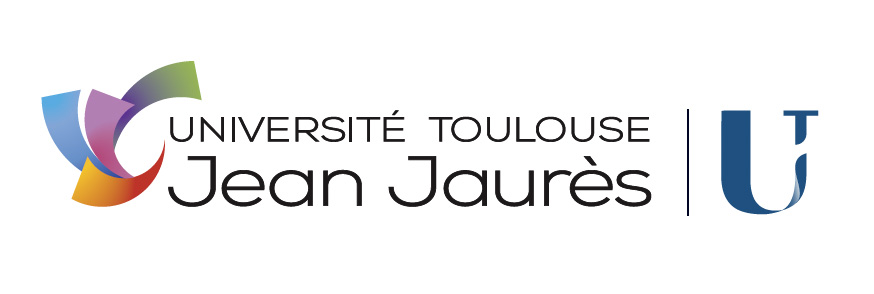-
Partager cette page
UE 702
| Accessible en | Formation à distance |
|---|---|
| Semestre | Semestre 1 |
| Crédits ECTS | 3 |
|---|
Responsables
Contenu
Les objectifs de cette UE sont de renforcer les compétences d’analyse littéraire et/ou d'analyse d'image des étudiants dans la perspective de la recherche. L'étudiant doit choisir un groupe.
Contenus : Les étudiants en Contrôle Continu doivent choisir entre 2 groupes, qui ont deux programmes distincts.
Enseignement à distance : oui (module propre au SED, intitulé “Male predatory behaviours towards women in literature and the arts”)
Group 1: “Male predatory behaviours towards women in literature and the arts.”
Intervenantes: Laure Blanchemain-Faucon et Marie Bouchet
L’objectif de ce cours est de montrer, via l’analyse littéraire et esthétique, comment les textes et les œuvres d’art répondent aux questions contemporaines, s’en saisissent, les reformulent et les éclairent. Il s’agira donc ici d’entreprendre une analyse « poéthique » des œuvres, pour reprendre les termes de Jean-Claude Pinson. Il s’agira en particulier de mettre en contexte la représentation des comportements prédateurs masculins en littérature et dans les arts du 18e siècle à nos jours.
Pour cela, deux périodes et deux domaines géographiques seront explorés, et deux enseignantes interviendront au cours du semestre.
Laure Blanchemain Faucon proposera tout d’abord une étude de la sauvagerie, toujours prête à ressurgir dans le monde soi-disant policé de la haute société britannique aux dix-huitième et dix-neuvième siècles. Des textes d’autrices féminines telles que Frances Burney et Jane Austen, ainsi que leurs adaptations, leurs illustrations, ou des gravures satiriques contemporaines seront étudiés à la lumière des théories d’Elias Canetti afin de comprendre comment s’opère le passage à l’agression physique, voire sexuelle, à l’époque pré-victorienne. La fascination pour la beauté des femmes mortes et le plaisir phallique de la mise à mort des figures féminines dans les textes victoriens (Poe, Le Fanu, Stoker, …) et dans les adaptations produites par la Hammer seront expliqués à la fois sous un angle contextuel (Dijkstra) et sous un angle plus universel (Bronfen, Creed). Une brochure sera fournie.
Marie Bouchet étudiera ensuite la question du consentement et de la prise en compte du point de vue des victimes d’agressions sexuelles via l’analyse du roman Lolita (1955) de Vladimir Nabokov, dont la pertinence à l’heure des mouvements #MeToo et #MeTooIncest permet de croiser analyses narratologiques, stylistiques, structurelles et exploration des questions de réception.
Les étudiants devront acquérir et lire le roman de Nabokov avant le début du cours.
Edition choisie pour le cours : The Annotated Lolita. New York: Vintage, 1991, ou London: Penguin Classics, 2000.
Group 2: “Creating and Managing Conflicts in Early Modern Literature: Religion, Gender, Diplomacy”
Intervenantes: Jeanne Mathieu, Lynn Meskill et Nathalie Rivère de Carles
Part 1 Religious Conflict on the Early Modern English Stage (Jeanne Mathieu)
The first part of this course will focus on the representation of religious conflict in early modern drama. Following a period of intense religious instability after Henry VIII's break with Rome in 1534, the seemingly religious uniformity imposed by the Elizabethan Settlement of 1559 must not be exaggerated, and it seems more appropriate to use the notion of “religious hybridity” (coined by Jean-Christophe Mayer in Shakespeare’s Hybrid Faith) to describe the English religious landscape in the sixteenth and seventeenth centuries. Although the ideas of coexistence and accommodation cannot be dismissed, numerous disputes between Protestants and Catholics were organised during the period. The aim will be to study the way in which these disputes found their echo in the drama of the period. The seminar will study scenes of religious dispute taken from three Elizabethan and Jacobean plays. We will first analyse the arguments used to try and convince the religious enemy. We will begin by focusing on the language of disagreement and its linguistic aspects through the analysis of a scene taken from The Virgin Martyr (1622) by Thomas Dekker and Philip Massinger. This initial rhetorical analysis of the dialogue will lead to an analysis of scenes in which communication fails and violence breaks out. We will look at the way religious issues trigger violence in Christopher Marlowe's The Massacre at Paris (1594) and analyse both the insults used by the characters and the violent events staged in the play. We will pay particular attention to the way the murders are staged, highlighting the transition between verbal and physical violence.
Part 2 Diplomatic conflicts and Women on and off the Early Modern English Stage (Nathalie Rivere de Carles)This part of the course aims to discuss how the representation of diplomacy on the early modern English stage can contribute to fan international as well as domestic conflicts as well as to offer a form of aspirational realism in terms of conflict resolution. Based on the study of Thomas Middleton’s play, A Game at Chess that stages a historical diplomatic event, the failed marriage negotiation between the future King of England, Charles, and the Spanish Infanta, we will first broach how at a time where England was pursuing a doctrine of appeasement, the play and its sources participated in increasing a conflict at home between the King and his Parliament. Dealing with marriage diplomacy as method for conflict resolution, we will then move to study more precisely the role of women as diplomatic objects, but also diplomatic subjects in William Shakespeare’s Henry V, a play that stages the military conflict between France and England, its origin in a faked historical diplomatic incident and its attempted diplomatic resolution. This will lead to assess the role of feminine figures in the literary representation of conflict and conflict management. We will use an interdisciplinary approach based on Timothy Hampton’s textual approach of fictional and diplomatic literature in Fictions of Embassy (2009), and the new diplomatic history combining history, sociology and gender studies as defined by John Watkins in his article “Toward a New Diplomatic History of Medieval and Early Modern Europe”.
Ueup(s) rattachée(s)
Contrôles des connaissances
Bibliographie groupe 1:
Austen, Jane. Pride and Prejudice (1813). New York: Norton, 2001.
Bronfen, Elisabeth. Over her Dead Body: Death, Femininity and the Aesthetic. Manchester: Manchester UP, 1992.
Burney, Frances. Evelina (1778), New York, Norton, 1998.
Canetti, Elias, Crowds and Power (1960). Trans. Carol Stewart, London, Phoenix Press, 2000.
Creed, Barbara. The Monstrous-Feminine: Film, Feminism, Psychoanalysis. London: Routledge, 1993.
Dijkstra, Bram. Fantasies of Feminine Evil in the Fin-de-Siecle Culture. Oxford: OUP, 1986.
Edel-Roy, Agnès. « Lolita à l’ère MeToo ». Cahiers de l’Herne Nabokov. Paris : L’Herne, 2023.
Fineberg, Joshua. Lolita, An Imagined Opera. 2008.
Fraisse, Geneviève. Et du consentement. Paris: Seuil, “Points”, 2022.
Gamble, Sarah, Ed.. The Routledge Critical Dictionary of Feminism and Postfeminism. London & New York: Routledge, 2006.
Kubrick, Stanley. Lolita. MGM. 1962.
Lyne, Adrian. Lolita. Pathé, 1997.
Nabokov, Vladimir. The Annotated Lolita. Alfred Appel Jr. Ed.. New York: Vintage, 1991.
Mokiejewski, Olivia. Lolita, Méprise sur un fantasme. Documentaire Arte, 2021.
Mulvey, Laura. “Visual Pleasure and Narrative Cinema.” Screen, Vol. 16, no. 3, 1 October 1975, pp. 6–18.
Pateman, Carole. “Women and Consent.” Political Theory, vol. 8, no. 2, 1980, pp. 149–68.
Pinson, Jean-Claude. Habiter en poète. Essais sur la poésie contemporaine, Seyssel: Champ Vallon, 1995.
Springora, Vanessa. Le consentement. Paris: Grasset, 2020.
Short bibliography group 2:
(further reading and methodological material will be made available on IRIS before the beginning of classes)
Primary sources
Thomas Dekker and Philip Massinger, The Virgin Martyr (1622), an annotated edition:
http://elizabethandrama.org/wp-content/uploads/2017/01/The-Virgin-Martyr-Annotated.pdf
Christopher Marlowe The Massacre at Paris (1594)
https://www.gutenberg.org/files/1496/1496-h/1496-h.htm
https://www.youtube.com/watch?v=C8xQ66afJSM
Thomas Middleton, A Game at Chess, édition électronique bilingue commentée https://journals.openedition.org/episteme/3913
William Shakespeare, Henry V (1598) (Cambridge, 2018) / édition électronique commentée: https://www.folger.edu/explore/shakespeares-works/henry-v/
The Hollow Crown part 2 (BBC, 2013)
Secondary sources:
Gilles Bertheau, Line Cottegnies (ed), Figures du conflit / Sciences et littérature, Episteme 14 | 2008 https://journals.openedition.org/episteme/714
Joanna Craigwood & Tracey Sowerby (ed.), Cultures of Diplomacy and Literary Writing in the Early. Modern World, (Oxford University Press, 2019).
Timothy Hampton, Fictions of Embassy: Literature and Diplomacy in Early Modern Europe (Cornell UP, 2009)
Frédérique Lecomte (dir.), Théâtre & Réconciliation. Méthode pour une pratique théâtrale dans les zones de conflit. Bruxelles : La Lettre volée, coll. Essais, 2015
Jeanne Mathieu, “Inter-Confessional Negotiations in Thomas Dekker and Philip Massinger’s The Virgin Martyr: Truce as Disputation”, Early Modern Literary Studies, No. 30 (2022)
Jean-Christophe Mayer, Shakespeare’s Hybrid Faith: History, Religion and the Stage, Basingstoke: Palgrave Macmillan, 2006.
Nathalie Rivere de Carles, Early Modern Diplomacy, Theatre and Soft Power: the Making of Peace (Palgrave, 2016).
---, « Ambassadrices imaginaires et diplomatie de l’imagination dans Le conte d’hiver de Shakespeare et La grande Sultane, Catalina de Oviedo de Cervantès », Shakespeare et Cervantès, regards croisés (Classiques Garnier, 2018)
Brian Sandberg, War and Conflict in the Early Modern World: 1500 – 1700, Wiley Blackwells, 2016.
John Watkins, After Lavinia: A Literary History of Premodern Marriage Diplomacy (Cornell UP, 2017)
---, “Toward a New Diplomatic History of Medieval and Early Modern Europe”, Journal of Medieval and Early Modern Studies, 38 (1), 2008, 1-14
Informations complémentaires
The final part of this course will examine the idea of conflict in light of its meaning as difference, whether difference as divergence, deviation, non-conformity or incongruity with regard to certain cultural expectations. In Early Modern England women were expected to adhere to the Pauline injunction to be chaste, silent and obedient. Yet, there are numerous examples of actual women who upended this injunction; numerous examples of pamphlets in which the place of women was questioned and argued; and, finally, numerous examples of representations of women in the theatre which defy sixteenth and seventeenth century cultural expectations to explore questions not only of gender fluidity and non-conformity, but also deviation, incongruity, even monstrosity. We will first examine together contemporary medical beliefs concerning the differences between men and women; then we will study the figure, iconography and writings of Elizabeth I, before delving into the controversies and quarrels surrounding the status of women in various pamphlets and other literature including Milton. Finally, we will explore the phenomenon of cross-dressing in the British theatre and the questions this unique practice raises about gender, sexuality and deviation in the theatre of Shakespeare.







